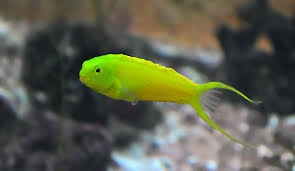The Development and Evolution of the Dragon Image in Chinese Art

The dragon, a timeless and powerful symbol, has played an essential role in Chinese culture and art for millennia. This mythical creature, known as “Long” (龙) in Chinese, is deeply embedded in the history and identity of China. Throughout the centuries, its image has evolved across different dynastic periods and artistic forms, serving as a symbol of imperial power, prosperity, and spiritual significance. The dragon’s image in Chinese art has been reinterpreted and adapted in various ways, reflecting the political, social, and philosophical changes within Chinese society. This article explores the development and transformation of the dragon’s image across different genres of Chinese art, including painting, sculpture, ceramics, and other decorative arts.
The Dragon in Early Chinese Art: Mythology and Symbolism
The earliest representations of the dragon in Chinese art can be traced back to the Neolithic period. During this time, the dragon was not yet the majestic, mythical creature that would become synonymous with Chinese culture, but rather a more abstract symbol of power, fertility, and nature. Early depictions of the dragon were often stylized and combined with other animals, such as snakes, fish, and tigers, which represented different elements of the natural world.
Archaeological discoveries, such as jade dragon pendants and carvings from the Liangzhu culture (c. 3300–2300 BCE), reveal that the dragon symbol was closely associated with both natural forces and the divine. In these early depictions, dragons were not yet a singular, well-defined image but rather part of a larger mythology that incorporated various totemic and spiritual symbols. These early dragon motifs were often used in religious and ritualistic contexts, symbolizing fertility, protection, and the cyclical forces of nature.
By the time of the Shang Dynasty (1600–1046 BCE), the dragon had emerged as a more distinct and powerful symbol in Chinese art. The Shang people believed in a complex pantheon of gods and ancestors, and the dragon began to take on its role as a divine protector and intermediary between humans and the heavens. This is reflected in the use of dragon imagery on ritual bronzes, which were often engraved with intricate patterns and symbols to invoke divine protection and blessings. The dragon’s connection to water, rainfall, and the fertility of the land became more pronounced during this time, reinforcing its role as a symbol of prosperity and abundance.
The Dragon in Imperial Art: Emblem of Power and Authority
As China entered the imperial era, particularly during the Tang (618–907 CE), Song (960–1279 CE), and Ming (1368–1644 CE) dynasties, the dragon became firmly entrenched as a symbol of imperial authority. The dragon’s association with the emperor was solidified during the Tang Dynasty, when the dragon was used as a symbol of the emperor’s divine right to rule. The emperor, known as the “Son of Heaven” (天子), was believed to be chosen by the heavens to rule over the Chinese people, and the dragon was considered the supreme symbol of the emperor’s mandate.
During the Song Dynasty, the image of the dragon began to take on a more refined and elegant form. Chinese painting, which flourished during this period, often featured dragons in a more stylized and symbolic manner. Artists began to depict dragons in landscapes and mythological scenes, emphasizing their role as celestial beings. The dragon was now not only a symbol of imperial power but also a part of the larger cosmological order, representing harmony between heaven and earth.
In the Ming Dynasty, the dragon’s image became even more elaborate and symbolic. The Ming emperors were known for their extravagant use of dragon imagery, particularly in the design of imperial robes, palace architecture, and ceremonial objects. The dragon was often depicted with five claws, symbolizing the highest level of imperial power. The most famous example of this is the dragon robe, worn by the emperor during important state ceremonies, which featured embroidered dragons surrounded by clouds and waves, signifying the emperor’s control over both the terrestrial and celestial realms.
The Dragon in Traditional Chinese Painting: Symbolism and Representation
Chinese painting has long been an important medium for expressing the symbolic power of the dragon. The depiction of dragons in traditional Chinese painting evolved over time, moving from more abstract and symbolic forms to detailed, lifelike representations. The dragon was often painted in conjunction with other elements of Chinese philosophy and cosmology, such as the phoenix (symbolizing the empress), the tiger, and various natural elements.
Tang and Song Dynasties: The Early Golden Age of Dragon Painting
During the Tang Dynasty, Chinese painting experienced a golden age, and the dragon began to appear more frequently in artwork, often depicted in dynamic, energetic poses. Artists of this period sought to capture the dragon’s spiritual essence rather than focusing solely on its physical form. Dragons were often shown soaring through the clouds, symbolizing the emperor’s ability to transcend earthly concerns and maintain harmony with the heavens.
In the Song Dynasty, artists focused on creating more delicate and refined images of dragons. These dragons were often painted in a more reserved, dignified manner, with an emphasis on elegance and balance. Song dynasty dragons were frequently depicted in mythological settings, where they interacted with other celestial beings, including the phoenix and various immortals. These paintings often symbolized the harmony between the natural world and the divine order, reflecting the Song Dynasty’s emphasis on intellectualism, refinement, and balance.
Yuan Dynasty: The Dragon’s Role in Court and Cultural Identity
During the Yuan Dynasty (1271–1368), which was ruled by the Mongols, Chinese artists continued to paint dragons, though the style began to shift in response to the changing political landscape. The Yuan court was known for its openness to foreign influences, and this is reflected in the way dragons were depicted. Yuan dynasty artists, while still maintaining traditional Chinese artistic conventions, were also influenced by Mongol and Central Asian artistic styles. The dragon was often depicted in a more geometric and stylized form, with elements of Mongol design incorporated into the artwork.
However, the dragon remained a powerful symbol of cultural continuity and national identity. Despite the political upheavals and foreign rule, the dragon continued to represent Chinese civilization’s rich artistic heritage and its connection to the divine.
Ming Dynasty: The Height of Imperial Dragon Imagery
The Ming Dynasty saw the dragon reach its zenith in Chinese art, especially in painting. The dragon became even more elaborate, often portrayed in a dynamic, swirling motion, representing the emperor’s control over both the earthly and the celestial realms. These depictions of dragons were meant to convey the emperor’s strength, wisdom, and divine favor, emphasizing the emperor’s authority over the entire empire.
Ming painters were skilled in rendering the texture of the dragon’s scales, the fluidity of its movements, and the mystical aura that surrounded it. The dragon was often shown with clouds and waves, symbolizing its ability to move freely through the natural world and connect the heavens to the earth. These paintings were not only seen as art but also as important political symbols of imperial power and the divine right of the emperor to rule.
The Dragon in Ceramics and Decorative Arts
In addition to painting, the dragon also played an essential role in Chinese ceramics and decorative arts. Throughout Chinese history, porcelain and ceramic objects featuring dragon imagery were produced in large numbers, particularly during the Tang, Yuan, Ming, and Qing (1644–1912) dynasties.
The Ming Dynasty, in particular, was known for its exquisite blue-and-white porcelain, which often featured dragons as the central motif. These ceramics were used both as functional items and as imperial gifts, further cementing the dragon’s role as a symbol of wealth and power. The design of porcelain vases, bowls, and plates often featured dragons entwined with clouds, waves, and other auspicious symbols, creating a harmonious and visually striking composition.
The Dragon in Contemporary Chinese Art
While the dragon’s role in traditional Chinese art has remained consistent, its representation has undergone significant changes in the modern era. Contemporary Chinese artists continue to draw on the dragon as a cultural symbol, though its depiction has evolved in response to modern sensibilities and international influences.
In modern Chinese art, the dragon is often portrayed in more abstract or experimental forms. Some artists incorporate the dragon into works that address contemporary issues, such as social change, urbanization, and globalization. Others reimagine the dragon in pop art or graphic design, adapting its traditional imagery to fit modern visual language.
Despite these changes, the dragon remains a powerful symbol in Chinese culture, representing the continuity of tradition and the enduring significance of Chinese heritage. Whether in ancient paintings, intricate ceramics, or modern artwork, the dragon continues to be a symbol of power, wisdom, and spiritual harmony in Chinese society.
Conclusion
The image of the dragon in Chinese art has undergone remarkable transformations throughout history, reflecting changes in political power, religious beliefs, and cultural identity. From its early, abstract representations in the Neolithic period to its role as a symbol of imperial power during the Tang, Song, and Ming dynasties, the dragon has remained a central figure in Chinese art. Its evolution in various artistic mediums, including painting, sculpture, and ceramics, highlights its enduring significance as a symbol of strength, prosperity, and spiritual connection. Today, the dragon continues to inspire and captivate artists, maintaining its status as one of the most powerful and iconic symbols in Chinese culture.


